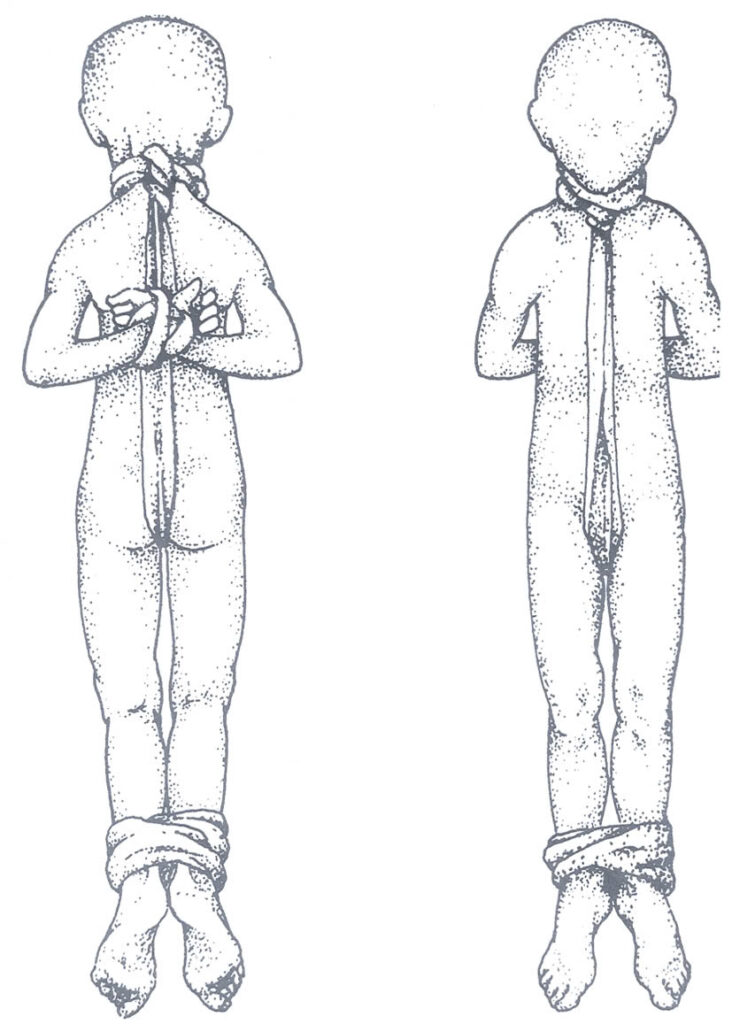In the quiet peat bogs of northern Germany, a disturbing discovery in 1922 would forever change our understanding of Iron Age Europe. The remains of a young child—now known as the Kayhausen Boy—emerged from the preservative embrace of the bog, telling a tale of violence that has captivated archaeologists for over a century. Dating back to approximately 300-400 BCE, this seven-year-old’s remains present one of archaeology’s most haunting mysteries.
The Chilling Discovery
Northern Europe’s bogs have long served as natural time capsules, preserving organic materials that would otherwise decompose. The Kayhausen Boy represents one of these remarkable “bog bodies,” found with clear evidence of deliberate human action. His small arms and feet were bound with cloth, suggesting intentional restraint rather than accidental death.

Forensic examination revealed an even more disturbing picture: the child had suffered multiple stab wounds—three fatal injuries to his neck and a defensive wound on his left arm, indicating he may have struggled against his attacker. These clinical details paint a vivid picture of violence against a defenseless child, raising profound questions about the nature of his death in Iron Age society.
Interpreting the Evidence: Ritual or Retribution?
The Case for Ritual Sacrifice
Many scholars point to ritual practices as a possible explanation for the Kayhausen Boy’s fate. During the Iron Age, bogs were often considered liminal spaces—gateways between the mortal world and the realm of deities. The careful binding of the boy’s limbs could represent ceremonial preparation for a sacrificial offering.

The precise nature of the wounds, particularly those to the neck, aligns with patterns observed in other bog bodies believed to be ritual sacrifices. Ancient European cultures sometimes offered human sacrifices during periods of hardship—famine, drought, or conflict. Could this child have been selected as an offering to appease angry gods or ensure community survival?
The Case for Punishment or Interpersonal Violence
An alternative interpretation suggests the boy may have been a victim of social punishment or interpersonal violence. The defensive wound on his arm strongly suggests he fought against his attacker—a detail that might contradict the theory of willing sacrifice.
Some archaeologists propose that the binding and disposal in the bog might represent either formal punishment for some perceived transgression or an attempt to conceal evidence of violence. The bog’s remote location could have served as the perfect place to hide a victim, with the perpetrators unaware that the environment would preserve rather than destroy the evidence of their actions.
Video
The Enduring Legacy of the Kayhausen Boy
Regardless of the circumstances surrounding his death, the Kayhausen Boy stands as a poignant reminder of humanity’s complex relationship with violence throughout history. His small, preserved body bridges the gap between our modern world and the often-brutal realities of ancient life.

As archaeological techniques continue to advance, researchers may yet uncover more details about this child’s short life, the community he belonged to, and the cultural context that led to his violent end. Until then, his remains—carefully preserved and respectfully studied—continue to speak across millennia, challenging us to understand the darker aspects of our shared human past.
What Do You Think?
Was the Kayhausen Boy a victim of sacred ritual, intended to serve his community through sacrifice? Or does his death represent the timeless tragedy of violence against the vulnerable? Share your theories and join the conversation about this ancient mystery!

